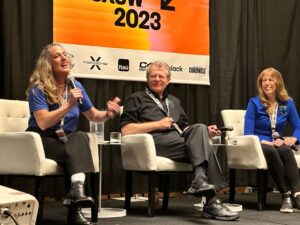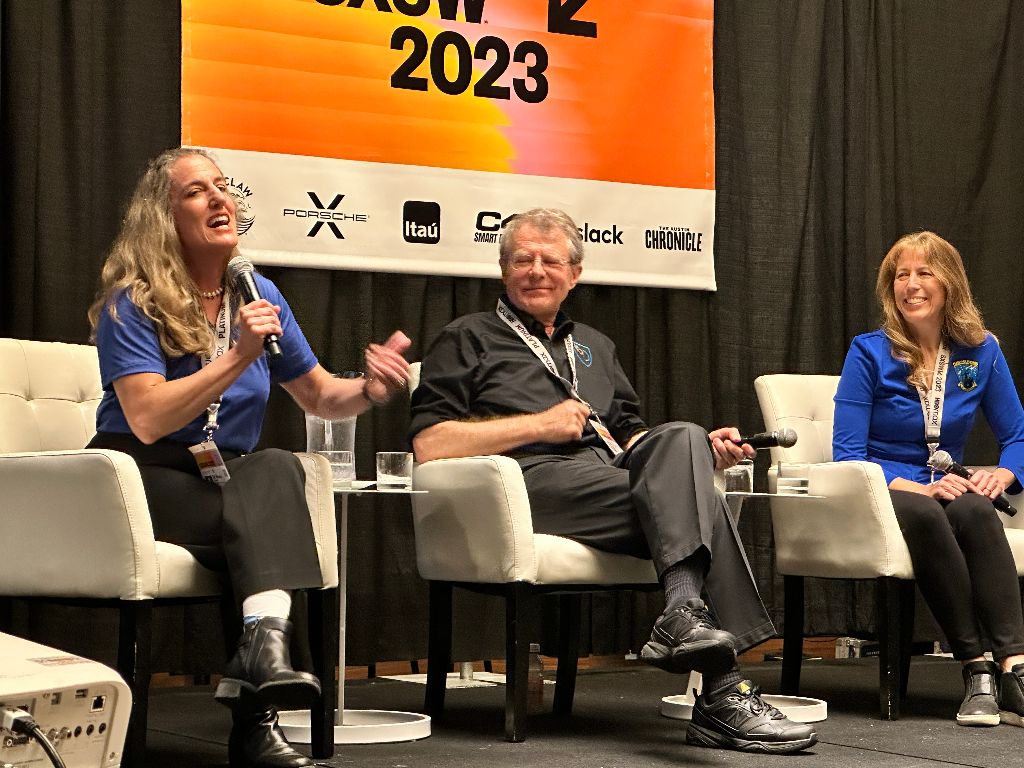In January this year an asteroid passed closer to Earth than some satellites in orbit. Dr. Paul Chodas said that when asteroids are predicted to get really close to Earth many people think “that’s really scary. No, we know exactly its path because we’re tracking it. We have very precise measurements.”
He was speaking at a dedicated session on asteroids at SXSW in Austin. Chodas is Director of the Center for Near-Earth Object Studies. He was joined on stage by Dr. Nancy Chabot, coordination lead on the DART space mission, and Dr. Kelly Fast, Program Manager for the Near-Earth Object Observation Program.
“Asteroids come in all different sizes and that’s really something that is not well understood,” explained Chodas. “The January asteroid was only 4 meters in size, which is really small. We get impacts of that size every year or so. Just in the last few months there have been impacts of even smaller asteroids, one metre across, the size of a table. We can discover those a few hours before they come to the Earth.
“Another important thing to understand is the brightness of an asteroid is the limiting factor in discovering things. If it’s a small asteroid it must be really close. One of those hit in Canada last November and one hit in France this year.”
Referring to a graph on display in the room, Chodas talked next about asteroids 25m across, about the size of the asteroid that impacted over Russia. “That one blew out windows and doors: it’s the shockwave that causes the damage. But there were no fatalities, the Earth’s atmosphere is protecting us. If we go a little larger, 140 meters, that is the threshold size that Congress and NASA has decided we need to find 90% of all of them that are that size or larger because that could cause regional devastation if something that size hit.” The frequency of those impacts is only once every 20,000 years “so it is very unusual for even a medium-size asteroid to hit the Earth.”
For an even larger asteroid, 1 km across, “that’s extremely rare, once half million years. We already know 95% of these, so we can retire that hazard. And there are no asteroids the size of Texas anywhere near Earth! But it’s the undiscovered population that is the worry. NASA’s goal is to get the 42% of known asteroids larger than 140 meters up to 90%. One way to do this is with better telescopes, such as NEO Surveyor [a spacecraft that will launch in 2028]. So within 10 years we should be able that detection rate close to 90% and then we can rest easy.”
Asked how we know what percentage of the population in any given size range have been discovered, Chodas referred to a fish analogy. “Try to guess how many fish there are in a pond. As you catch them you tag them and throw them back. As you start catching 90% of the fish that are tagged then you know, statistically, that you have discovered 90% of those fish in the pond.”
Chodas said 31,000 near-Earth asteroids have been discovered, some of which are termed potentially hazardous asteroids. “Those are asteroids whose orbits come close to the Earth’s orbit in three dimensions. There are 2,300 such objects. There are 200,000 measurements per year to keep track of them. Everytime one passes close to Earth we update our orbit and make it more precise. The trick is to run that forward in time to see if there is any possibility of impact over the next 100 years. Making the calculation for 50 or 100 years away requires a lot of data but fortunately asteroids are well behaved so the mathematics is pretty simple.”
Chodas talked about deflecting an asteroid once it has been determined it’s on a collision course with Earth. “If you don’t know the mass of the asteroid or its size or its density, it’s really hard to design a campaign to deflect it with maybe more than one kinetic impactor.” Speed also essential once an asteroid threat has been identified. “It has to be rapid. Let’s say it impacts 8, 10, 15 years from now – that seems like a lot of time but it’s not because you need to deflect that asteroid ASAP.”
Last year a NASA spacecraft dubbed DART hit an asteroid and deflected it in the first test of a planetary defense system. DART hit the moon (Didymos) of a larger asteroid (Dimorphos). Chabot explained how the DART mission originated. Just hitting an asteroid to see what might happen turned out not be the optimum solution. After a kinetic impact “you have to measure a deflection but if it’s just going around the Sun that’s a much more challenging measurement. People then had concepts with 2 spacecraft: the second one would be there to measure how much you deflected it. And then your costs probably double! So it becomes an even harder thing to do when it’s never been done before.”
Chabot related an unusual way this problem was avoided. “My colleague Andrew Cheng was exercising in his basement and popped up with the idea of using a double asteroid system. That’s how innovation happens: while you’re exercising or doing other things! He said we could demonstrate asteroid deflection within this double asteroid system. It was such an elegant, clever and smart way to take this first step. It’s very safe and very measureable: every 11 hours and 22 minutes we get another measurement of that.” Chabot was referring the the orbital period of Didymos around its parent asteroid, a period that changed when DART impacted. “It turned out that 2022 was the time to do that at Didymos and Dimorphos because the distance between Earth and that system on Sept. 26 was at a relative minimum. That let the telescopes of the world make the measurement as to how much it was deflected. That won’t happen with this system again for 40 years.”
For the latest book-length study of the subject, see the title Asteroids, written by Dr. Cliff Cunningham. Published in 2022 by Reaktion Press. Available in the United States from University of Chicago Press.
Photo by C. Cunningham

